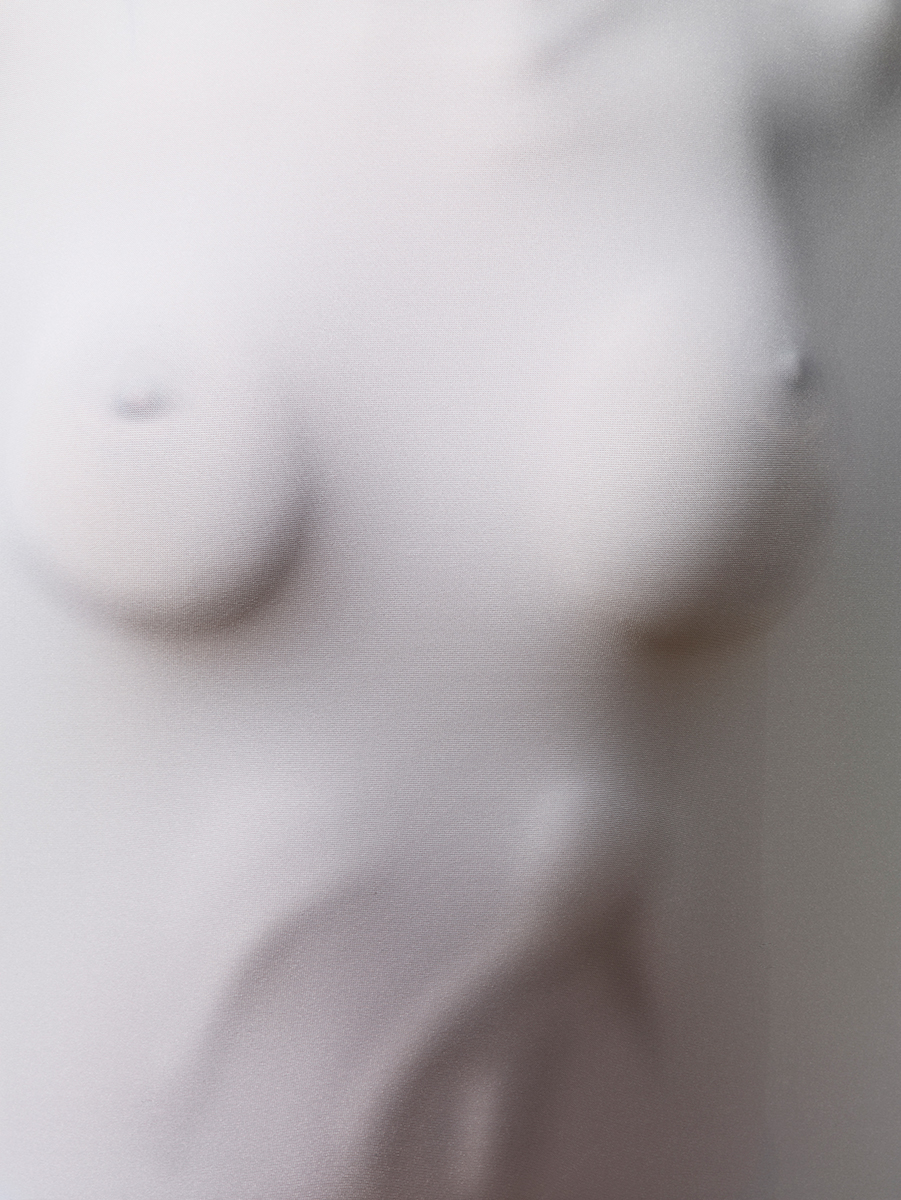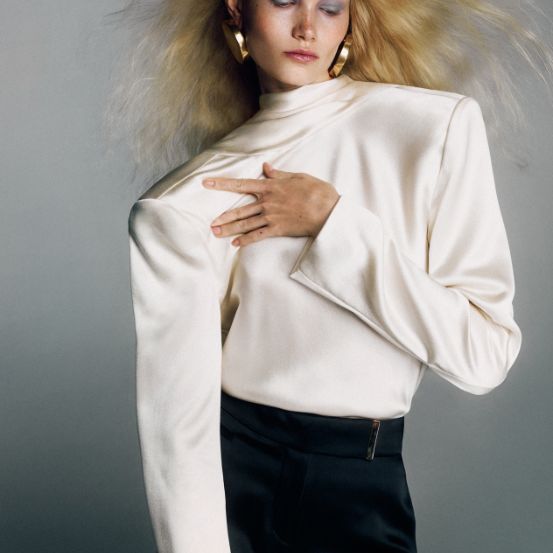Once upon a time there was a skin as smooth as velvet, as shimmering as gold. And once upon a time there was a tumultuous road that got us there. A road full of trial and error, of cosmetic products thrown away and money wasted. Sounds familiar? It doesn't have to be.
Once upon a time there was a skin as smooth as velvet, as shimmering as gold. And once upon a time there was a tumultuous road that got us there. A road full of trial and error, of cosmetic products thrown away and money wasted. Sounds familiar? It doesn't have to be.

© Getty Images
© Getty Images
It seemed like just another day wasted scrolling through social media. Video after video, post after post, I looked for the hottest Beauty trends. Then, suddenly, my finger stopped. There it was: my dream skin. No redness, a velvety texture, and not a blemish in sight. "It takes luck, genetics, and money," I thought, between sighs. The video, which started with a close-up of the wonder skin, was followed by suggestions that the so-called influencer said to be necessary to achieve it. Serums, tonics, day cream, night cream, eye cream. Each of the packages displayed slowly gave way to ironic dollar symbols that danced before my eyes. It's as if our dream skin has a cost. It's as if there is a magic number that will make all my problems disappear. The influencer says so. Advertising says so. The cosmetic world says so. Or could it not be the case? Could it be possible to get the skin I wished for to the sound of the new year's fireworks without ruining my bank account?
Iolanda Pereira, pharmacist, post-graduate in cosmetology and author of the Instagram page @pelemecare_bemtequer, is the light we were looking for at the end of the tunnel. The answer she presents is not very complex (and perhaps many already know it), but the truth is that the price of a cosmetic is "not directly proportional" to its quality. This is because there are many different factors that are considered when a brand calculates the consumer price of its products, and not all of them are linked to production, for example. The pharmacist simplifies, explaining that there are two major areas that weigh in for the final calculation: "formulation" and "marketing." In the former, there are issues such as "the investment in technology, the ingredients used, the evaluation of efficacy and quality, the studies that corroborate the claims, the production costs, the quantity produced (raw material, packaging), transportation and distribution". Marketing, in turn, "works on the packaging, the brand ambassadors, the campaigns developed to promote the new product, and the positioning [of the brand] in the market (supermarket, pharmacy, perfumery)." There are numerous aspects that a brand must consider before setting the price of a cosmetic product - and here we are only listing the so-called mandatory factors to be considered because they are involved in the cost of its formulation. We also have to consider the margin, which, in the words of Iolanda Pereira, is "the real profit" that a brand will make from the sale of its product.
Currently, it is possible to find cosmetic products in the Portuguese and international Beauty market that exceed thousands of euros per unit. The vast majority trace their high value to the key ingredients in their formula, ingredients that we are already used to seeing associated with high prices (even beyond the cosmetics sector). Gold is one of the most common. Caviar may also be on this list. To these, Iolanda Pereira adds the "exotic plant extracts and essential oils" that require "a thorough extraction in specific areas," as well as "patented molecules or [the use of] sophisticated technologies for their development." As we saw in the last paragraph, it is not only the ingredient itself that has the ability to dictate how expensive a cosmetic product formulation will be. The pharmacist lists additional elements that can justify the several zeros the label: "The investment in the formulation, including the choice of raw material, the concentration of ingredients, the texture, the fragrance and the studies involved in innovation influence the production costs. We also know that the same raw material can have different degrees of purity and, therefore, quality. This is directly related to a higher value." Another point to highlight is, according to Iolanda, "the penetration capacity and the combination of ingredients in the formula." This is the reason why many brands are able to practice lower prices, because they rely on "simple formulas, with one or two active ingredients at most." Some of the biggest success stories in the dermocosmetic industry have followed this principle, and the results seem to be very well-received by most consumers.
Now that we have unraveled all that lies behind the price of a Beauty product, it is time to understand how to use this knowledge to our advantage. Yes, because if there is something truly valuable in this industry, it is to know how to examine a formula beyond the advertising claims that identify it and be aware of what our skin - in its uniqueness as beneficial as well as frustrating - really needs. It is precisely this knowledge that Iolanda Pereira wants to provide her followers with on social, because at the moment of the choice, we "should keep in mind what we really need, the needs of our skin, the function of the cosmetic product and whether to favor branded products." We all do it. "Sometimes, we already have an empathy and trust for a certain brand, or we prefer certain textures, fragrances, making our decision easier, at the time of choice." In addition, with information being increasingly democratized and accessible through social media - although it is always important to confirm how reliable is the source on which we base our knowledge - "it is easier to compare products and analyze product reviews." For this, the pharmacist advises visiting "the information available on the brands' websites," because not only is it possible to access the detailed characteristics of each product, but it is common to find testimonials from other consumers who have ventured into the same purchase.
With the right information, it is much easier to prioritize the care that our skin really needs. In an initial stage, Iolanda suggests "analyzing the products you already have at home", because so often we are presented with cosmetics that get forgotten in the cupboards (which can be used, if they are within the expiration date) and then starting "a simple routine", based on three steps "transversal to any concerns and skin types: cleansing, moisturizing and using sunscreen". Iolanda Pereira explains the importance of each of these steps: "Cleansing has the ability to eliminate external and internal residues, improving the penetration capacity of the products applied later. Hydration contributes to maintaining the skin barrier against the external aggressions to which the skin is daily exposed. Using sunscreen is, without a doubt, one of the fundamental and primordial steps when buying products for the routine. This product helps us prevent or correct signs of aging, acne marks, blemishes, throughout the year." Although all skin types benefit from this routine, each person must consider the suitability of the product's "formula, texture and fragrance" to their specific case. For example, for those who suffer from more sensitive skin, the pharmacist advises looking for cosmetics with "a more minimalist formulation, to decrease potential irritation."
Those who want to go beyond the basic routine can do so with Beauty products that combat more specific problems, namely "a serum", since it has "a greater capacity to deliver active ingredients, thanks to the high concentration", and that should be "applied after cleansing." The same can be said of "eye cream, in case we have some type of concern in the eye contour area, such as increased sensitivity, accentuated dark circles, development of milium [small spots] or signs of aging," explains Iolanda Pereira, who adds to this list "the night cream." For the pharmacist, day cream and night cream can be "the same product", unless some of the following properties are verified in its formula: "The presence of exfoliating actives, depigmenting or sun protection factor." In that case, it will make sense to opt for distinct creams that serve the characteristics of the routine to which they belong (that is, day or night). Beyond products for regular use, the Beauty sector also offers the possibility of pampering the skin punctually, with "exfoliators and masks", or even complement our routine with "tonics, essences, ampoules, mists." There is no magic number for how many steps should be in a Beauty routine. And if there is, that number is personal and non-transferable, as it will be crafted according to each person's needs.
Even after creating a routine that suits our concerns, it is important to constantly keep an eye on the performance of each step. Sometimes, it only takes slight changes in our lifestyle for a product to no longer correspond so well to our skin goals and, for this reason, Iolanda Pereira prepared a set of questions to ask ourselves in order to ensure that we always have the skincare routine that benefits us the most. Among these, the pharmacist highlights: "Does this product make my skin feel comfortable or tight? Do I feel a beneficial effect with this cream, or has it not diminished my concerns, such as blemishes, acne? If the answers are positive, they indicate the continuity of the products. If not, it will be time to ponder and analyze, so we can improve the routine." To Iolanda Pereira's questions, I add one more: What's the point of having a shelf full of expensive products and luxurious packaging if their formulas are not the most appropriate for our skin? After all, it is not money, but knowledge that is the cosmetics industry's most valuable asset. Midas may have a lot of gold, but we have a lot of knowledge - and for that alone we are richer.
Translated from the original on "The Velvet Touch" issue of Vogue Portugal, published December 2022.Full stories and credits on the print issue.
Most popular


Relacionados
.jpg)


LightHouse Publishing x Street Smash Burgers: uma noite no escritório da Vogue Portugal
19 Dec 2025
 (14).png)


